Revolutions
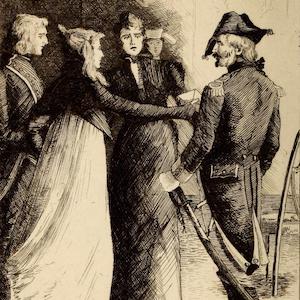
Balzac’s The Chouans
Novelist Honoré de Balzac (1799–1850) was a giant of nineteenth–century European literature. In his multivolume The Human Comedy, he investigated the general desire for social advancement in the post–revolutionary world.
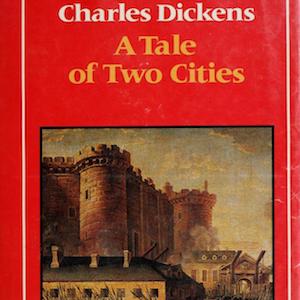
Dickens, Tale of Two Cities
Charles Dickens’s (1812–70) novels generally appeared in serial form in popular newspapers.
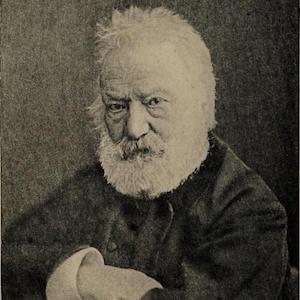
Hugo, Ninety–Three
Victor Hugo (1802–85) was an ardent republican and defender of the revolutionary legacy who went into exile during the Second Empire (1852–70). He lived long enough to become an icon of the Third Republic.

Watch Yourself or You'll be a Product for Sale
The women in this image appear to be tempted to a life of prostitution. The female figure in the left foreground gestures toward the door but remains modestly attired. Once inside, the women are there for the pleasure of men and wear revealing or little clothing.
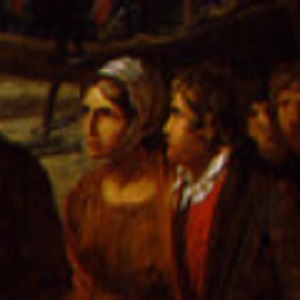
The Fatherland in Danger
This painting of the period by Gillaume Guillon Lethière shows the emotion caused by the prospect of loved ones departing for the army. Women had to part with their families in order to support the nation in its time of need. Notice the female statue overlooking the scene.
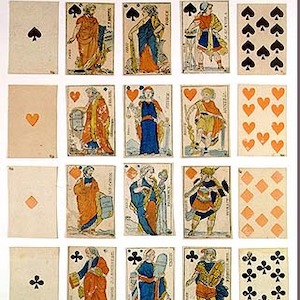
Game of the Great Men, Minot the Elder
Revolutionaries redesigned playing cards in order to eliminate references to royalty (kings, queens, jacks) and replace them with great men and abstract virtues.

Goodbye, Comrade...
Of all of the East Central European revolutions, only Romania's turned violent. After government security forces killed protesters in the city of Timisoara, violence broke out between the army and the secret police, with the army standing by the protesters.
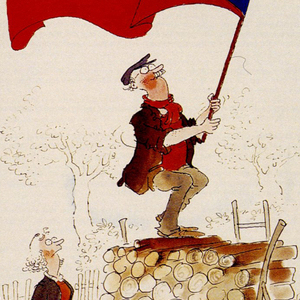
"...Climb Down and Get to Work!"
In Spring 1990, Czechoslovak artist and cartoonist Vladimir Rencin sends this message that is was time to stop the flag-waving euphoria surrounding the revolution's victory and to get to the hard work of rebuilding the country.

The Death of Marat
This famous depiction of Marat’s assassination (1793) is by the unofficial (and sometimes official) artist of the French Revolution, Jacques–Louis David, a leading exponent of the neoclassical style.
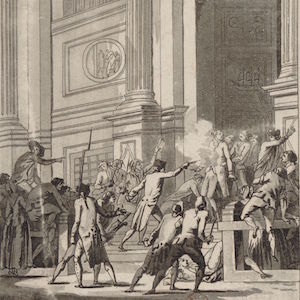
The Seventh Incident of 14 July 1789
Upon returning to City Hall, the now heavily armed crowd stormed that building as well, arresting the "Provost of Markets" (or mayor) and his son–in–law, another municipal official.